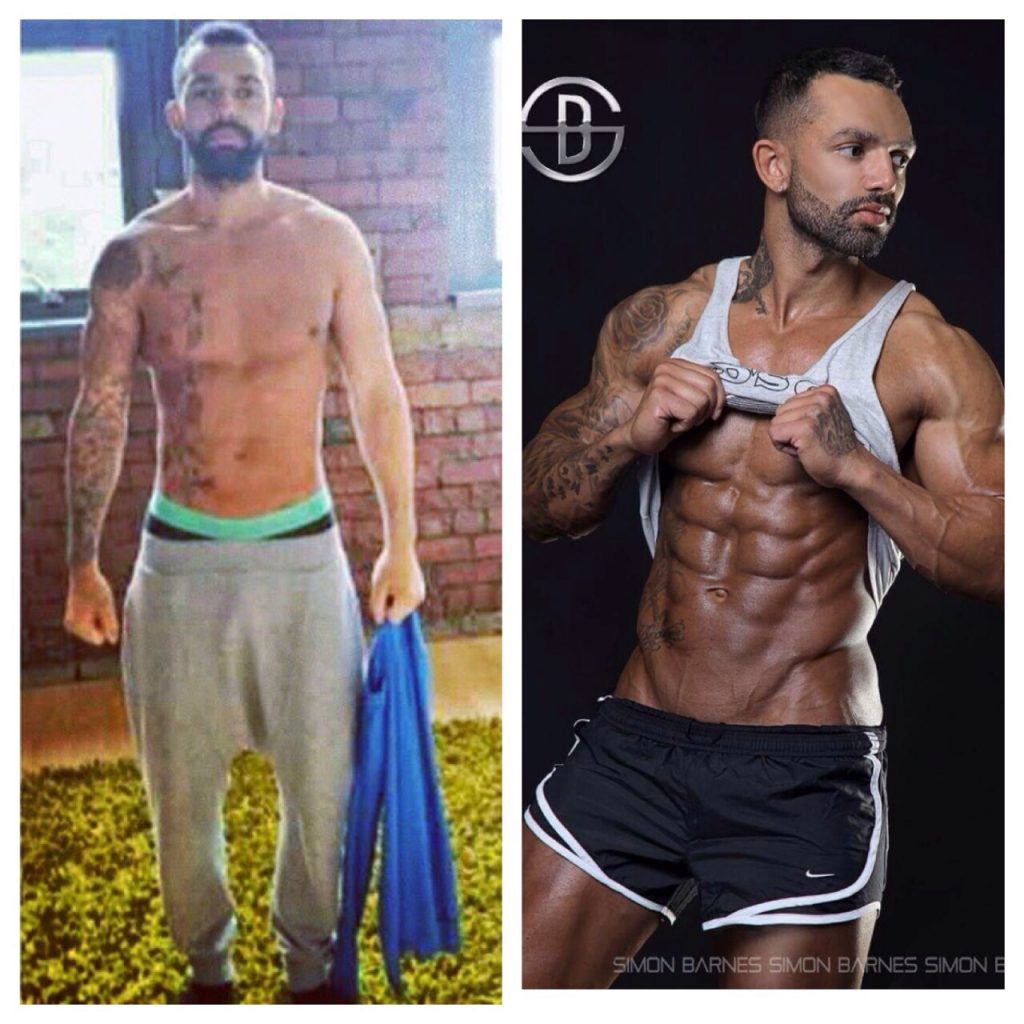This inspiring success story submission is by Tonie Browne and his battle with ulcerative colitis and Crohn’s disease. The Main image of Browne was captured by Tony Hazell Photography.
I was diagnosed with ulcerative colitis in 2008 and suffered with countless flare ups. However, the biggest flare up came when I was diagnosed with Crohn’s disease in 2014. I was 10 weeks into a 14 week diet for a UKBFF physique show and I was rushed into hospital in agonising pain. Little did I know how much of an impact this would have on my life in the next coming months. The large amount of turkey I was eating (which is a dry meat) had caused a very big abscess in my back passage, this meant I couldn’t walk or sit down, and an operation was my only option.
Following more tests, the doctors had found Crohn’s disease at the bottom of my intestine, one doctor even said, “this is one of the worst inflamed areas of the intestine I have seen in some time.” Reassuring as you can imagine.
However, while still in the hospital I continued practicing my posing for the competition and refusing to accept defeat. Unfortunately, this didn’t last long as I regrettably caught what is known as the CMV virus. And that was what almost put me into intensive care.
Some 4 weeks later, in isolation and almost 3 stone lighter, I was sat deep in my own thoughts. What was the point in training/dieting, when every time I had tried I would have a flare up and get ill? I even said to my training partner, “I don’t think I’m going to train much anymore, what’s the point?” I had hit rock bottom. Then it hit me. Habit, the same routine… I had managed to make the same mistakes and not learn from them.
Related: How to save yourself from a negative thought pattern
Wanting to learn more about Crohn’s disease and colitis, I found a survey that Crohns & Colitis UK had conducted on how Crohns and colitis affects people taking part in sports and fitness, and the statistics inspired me to make a difference.
Of the nearly 1,000 respondents surveyed, 80% stated that they had given-up or reduced their participation in sport either temporarily or permanently as a result of their symptoms of uncontrollable diarrhea, fatigue, joint problems, and severe pain.
I was one of the 80%. I was a statistic. But I refused to accept this.
As human beings we are one of the most adaptable creatures on earth. We are smart, we always find a way to survive.

Once released from hospital I couldn’t walk up the stairs to my flat, but I still dragged myself to the gym the next day to start rebuilding my body and life. Everyone thought I was stupid, but I knew what I had to do and how I was going to go about it. One year later, I returned to the same show and won. I became North West physique champion with an invite to the British finals in October 2015.
More educated on Crohns Disease and it’s affects on everyday life, I realized my workouts were too long. People with ulcerative colitis and Crohn’s disease — in some cases — suffer from chronic fatigue. If you didn’t know this, ever wonder why you feel the need to nap at random times in the day? Do you consume 3 times the recommended daily allowance of coffee? Yep, that’s chronic fatigue. I chose to shorten my workouts to 30/40 mins high intensity to accommodate this.
I have devised a workout for what was one of my weakest body parts and now, from what I am told, is one of my strongest areas, my back.
I’ve trained back for 10 years and only learned in the last year how to train and switch on my back muscles in the most effective way to get that symmetry and detail. One thing you will have noticed when training your back, is your biceps burn out and often fail before your back does. This is because the biceps are a secondary muscle helping you perform this exercise. So what do we do? We take your biceps out of the equation, and we pre-exhaust the back.
Performing a set of cable pullovers, not only helps keep tension on the lats but also takes your biceps out of the equation. Leaving your back full of blood, pumped and on fire for the rest of the workout.
Follow my back blast workout twice a week and watch your back grow!
Keep in mind before you start this workout, you can’t see your back while you’re training it. Legs are the same depending on what you wear to the gym, and it’s one of the reasons some people are so unmotivated to train legs.
You have to connect with the muscle MMC (mind and muscle connection). Holding a squeezing every rep so you can feel the back muscles fully contract. You should be squeezing hard enough so that you feel as if you are going to get cramp. Not switching on your back with MMC is like trying to start an engine with no key, it just won’t happen. So now that’s out of the way.
Here’s the workout you will be doing twice a week:
1. Single-arm cable pullovers; 3 sets of 10 reps
Ensure that your lats muscles are contracted before performing the movement. Make sure your elbow is as far back as you can get it when contracting the lats. The key with this exercise is to hold and squeeze the back without involving your triceps. Keep the arm slightly bent, once the lats have reached failure don’t be tempted to recruit other muscles to help you perform the exercise.
2. Weight-assisted wide grip pull ups; 3 sets of 10 reps (with 3 second holds)
Leave your ego at home when it comes to this exercise. It’s all about getting that detail in your back, not throwing yourself up for as many reps as you can. As I say to my clients, “I’d rather you do 3 perfect reps to positive failure, then 10 that didn’t even involve the muscle your are trying to train.”
3. T-bar rows; 3 sets of 10 reps (utilizing the rest-pause method)
Perform 10 reps, then stand up for a rest pause of 10 secs. Squeeze out a few more reps then again stand up for a second time (this time just 5 seconds) then continue till you can’t hold the bar any longer. Remember, heavy weight is not the key here, squeezing as hard a you can is.
4/5. DB pullovers; 3 sets of 10 reps + DB single arm rows; 3 sets of 8 reps
By now your back should be on fire! This is the finisher!

Lifting Tempo: 3:2:4 (3 seconds lift, 2 seconds hold, 4 seconds down)
Rest 1-minute in between all sets
What you should feel…
Pumped and wide, and that you feel like you might just take off in the wind outside. Also, remember your body learns to adapt, so change the rep range of this workout along with the weight to keep your body guessing. Then after a few weeks change the workout.


